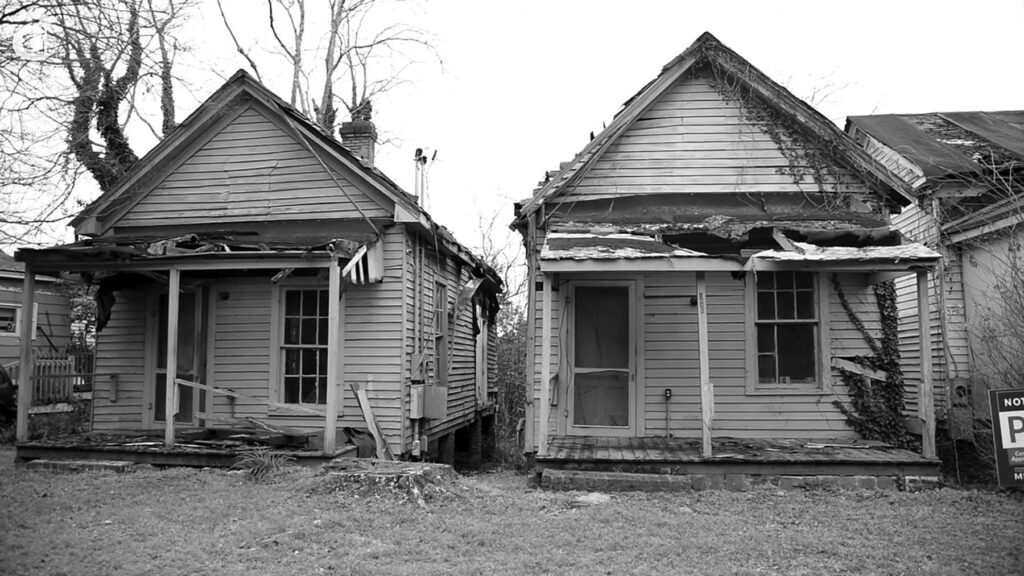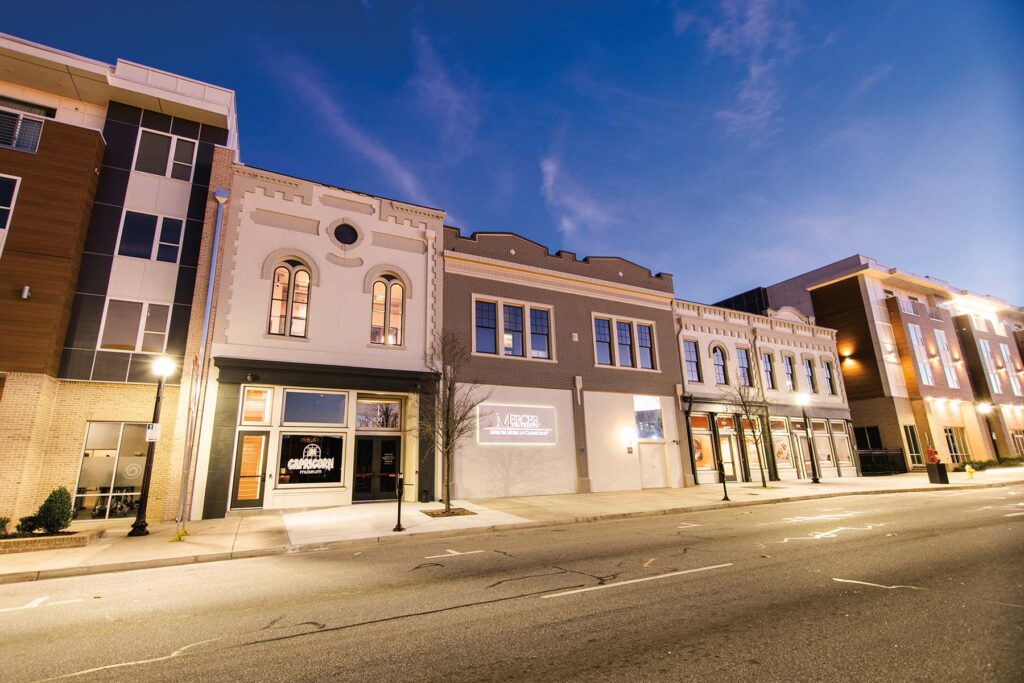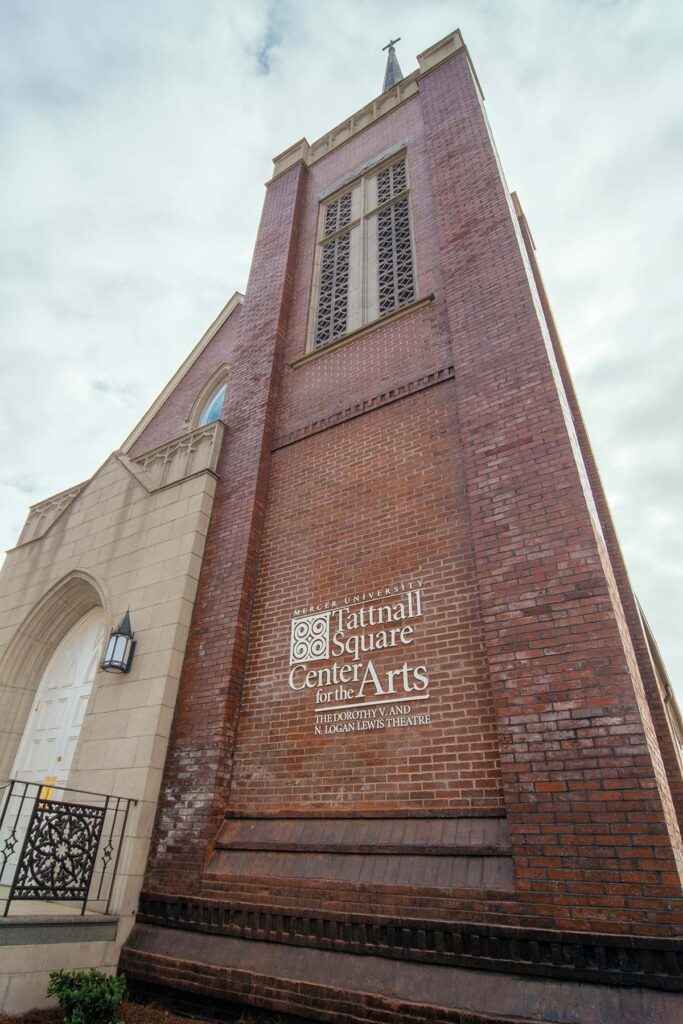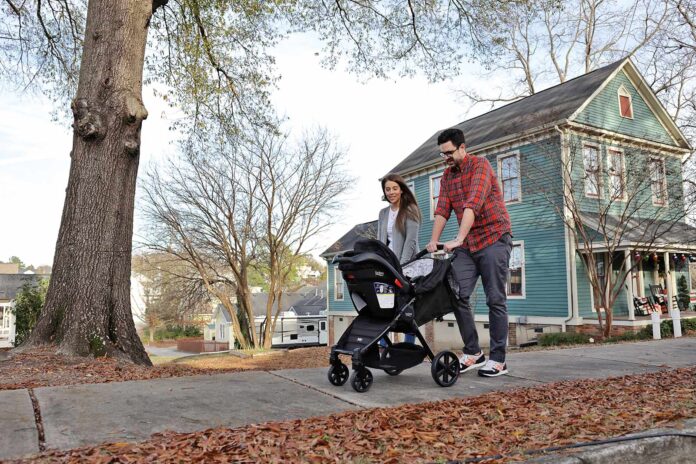When Ethiel Garlington first visited the Beall’s Hill neighborhood in 2014, he knew he had found an unusual place: a diverse Macon neighborhood marked by thoughtfully renovated historic homes, small, family-run businesses, and an adjoining university campus. Young Mercer faculty and staff shared a sense of community with longtime residents.

For Garlington, who had spent much of his life in university towns, the scene surprised him.
“I was honestly kind of baffled the first time I visited Macon,” explains Garlington, who now serves as executive director of the Historic Macon Foundation, a nonprofit with a successful track record in neighborhood revitalization and a longtime Mercer partner. “Having come from other university towns, I’ve seen that the preservation of community is not always the priority for the institution. It was so refreshing to see a place where the university was so invested in the community. I was baffled, but in a good way.”
The scene was enough to inspire Garlington to take the role of executive director of Historic Macon that same year.
“It just seemed like amazing work to be part of,” he says.
Block by block
Beall’s Hill didn’t always look like the inviting neighborhood that prompted Garlington to move his family to Macon. By the late 1990s, Beall’s Hill was struggling. Much of the area was blighted. Crime rates were on the rise, and residents were decamping in droves for other neighborhoods or cities. Aware of the growing issues surrounding its campus, Mercer joined with the Macon Housing Authority and Historic Macon to try and turn the tide for Macon.
“We knew that if the neighborhood didn’t survive, we wouldn’t either,” says President William D. Underwood.

After Mercer announced its commitment to revitalizing Beall’s Hill, the project began in earnest in 2001 when the city housing authority tore down the dilapidated, 200-unit Oglethorpe Homes. It was replaced with 97 apartments and 10 new single-family homes. Mercer and Historic Macon encouraged faculty and staff to move into the area by offering up to $20,000 in down payment assistance in exchange for a five-year commitment to live in Beall’s Hill.
Next, in 2007, the John S. and James L. Knight Foundation awarded Historic Macon a $700,000 grant to rehabilitate homes in the neighborhood and provide matching funds for the down payment assistance program. Over the next five years, the money paid for the revitalization of 22 houses. From there, the restoration plan moved block by block across the neighborhood.
To date, Mercer and Historic Macon have overseen the rehabilitation of close to 60 homes, half of which are historic renovations and the rest new construction. They’ve also planted over 50 trees, given away nearly 40 free bikes to new residents and put in new sidewalks and lighting to make the neighborhood more pedestrian-friendly.

Downtown connection
Improving individual homes has led to commercial changes in the neighborhood, too. Between 2008 and 2012, the Knight Foundation awarded Mercer and its partners more than $7 million to help kick-start improvements to connect the campus to downtown, two miles away. That includes Mercer Music at Capricorn, in the former studio space of the legendary music label Capricorn Records. The complex’s museum celebrates Otis Redding Jr., the Allman Brothers and other members of the Macon music scene through artifacts, murals, and interactive exhibits, and houses a music incubator for aspiring musicians. There’s also the Tattnall Square Center for the Arts, a creative reuse of a historic church in the center of the neighborhood and home to Mercer’s Theatre Department.
But, says Garlington, improving infrastructure has been only one part of the plan. “For us, and for Mercer, it’s much more than just removing blighted buildings,” he explains. “It’s really about the community and the people.”
“The challenge is that this process can cause gentrification if you’re not careful,” adds President Underwood. “We wanted to make sure we could improve the neighborhood and welcome new residents without forcing longtime residents out.”

A neighborhood for everyone
Fostering such a place required a creative, strategic plan. In addition to offering faculty and staff up to $20,000 for down payment assistance, Mercer and Historic Macon also help longtime homeowners navigate tax credits for historic homes that can be rehabilitated.

Equally important, the two organizations also ensured that property taxes for existing homeowners did not spike with the neighborhood investments. Even as the value of homes improved, longtime residents were not displaced due to rising taxes. And for those who wanted to make improvements to their houses themselves, Historic Macon also offered low-interest loans up to $10,000. To take it a step further, the organization offered emergency repairs to longtime residents’ homes, including roof work, grading and exterior painting.
“If I could clone the leadership at Mercer and inject them into every college town, America would be a much better country,” says Mary Ruffin Hanbury, a founding principal at Hanbury Preservation Consulting and an adviser on the Beall’s Hill project. “They do not approach this work as colonial conquerors. There’s no arrogance. It’s just a different approach to how a town-gown relationship can work.”
It’s a successful one, too. So much so that the Knight Foundation invested another $3 million into the project in 2014. And as of last year, more than $250 million has been invested in the area since 2009. That includes private investment, retail, housing, new hotels and several Mercer projects, including a new 10,000-seat football and lacrosse stadium. Garlington is proud of those numbers. But when he considers what illustrates success, he turns to the quieter moments.
He recalls a conversation he recently had with neighbors as their children zipped around the playground in the neighborhood’s Tattnall Square Park, one of the oldest city parks in the nation and a beneficiary itself of the investments. The couple was among the Mercer faculty who moved to Beall’s Hill knowing very little about the area. Now, a few years later, they’ve outgrown their house, but rather than leave, they’re adding on.
“It says so much about this place,” says Garlington. “This is a community that cares. Mercer always seemed to understand the importance of creating such a community. They knew that if the Macon community thrives, so will the university.”
A national model
Beall’s Hill has become a national model for neighborhood revitalization. Its success was a key factor in the National Trust for Historic Preservation presenting its 2018 Trustees Award for Organizational Excellence to Historic Macon Foundation, Mercer’s partner in the initiative.
That same year, more than 100 urban planners and historic preservationists from over 50 cities and 26 states traveled to Macon for a Revolving Fund Summit to get an up-close look at how neighborhood revitalization and strategic reinvestment can revive communities. Beall’s Hill was a focus of the summit, which was organized by The 1772 Foundation, a national organization that works to ensure the safe passage of our historic assets to future generations.
The foundation for the success of the Beall’s Hill initiative was laid early with effective planning and input from stakeholders. In 2005, the Congress for the New Urbanism (CNU), whose mission is to champion walkable urbanism, selected the Beall’s Hill urban design and architectural guidelines to be among the best in the world in representing excellence in urban design.
Today, some of the highest prices per square foot for residential closings in Macon-Bibb County are houses in Beall’s Hill. The fact that has been accomplished without displacing longtime residents is perhaps President Underwood’s greatest point of pride.









